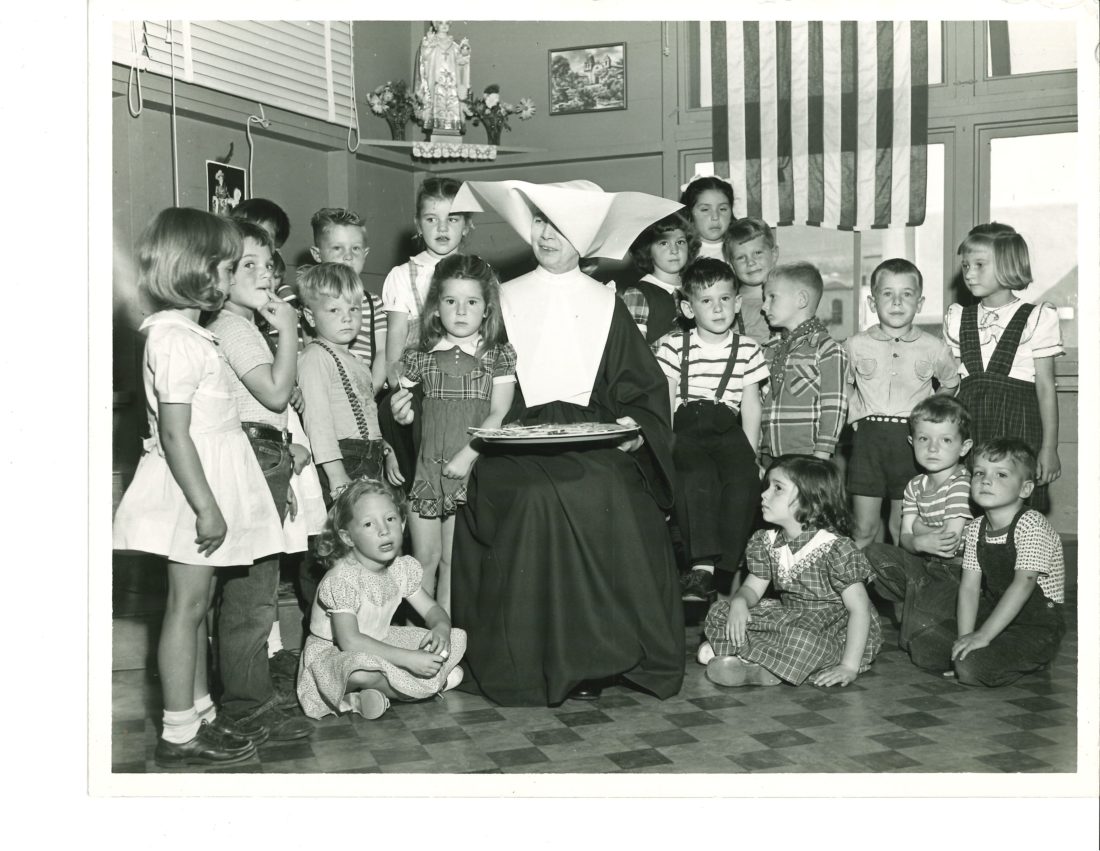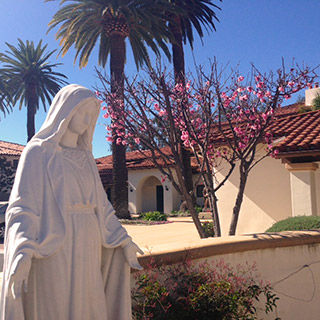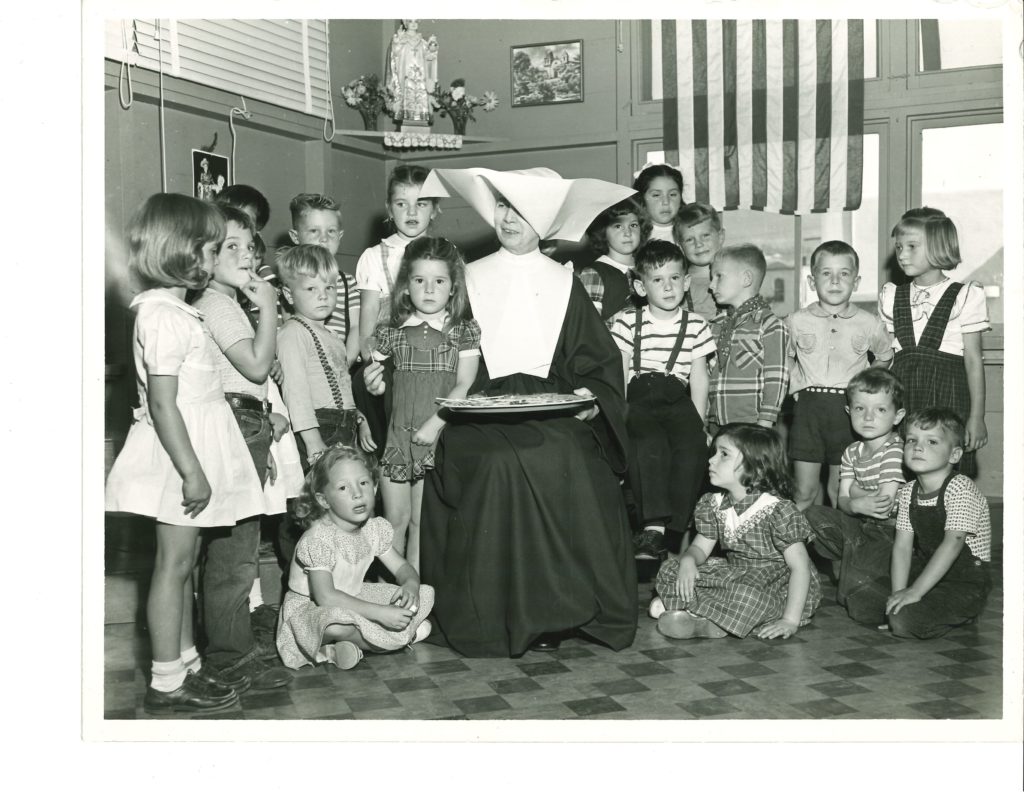
The Blessing of St. Vincent: In 1918, California’s First Day Nursery Opened in Santa Barbara
THE SANTA BARBARA INDEPENDENT | TUESDAY, MAY 24, 2022 |
Lack of affordable childcare has been a chronic problem in Santa Barbara since the early 20th century. The city, however, may look with pride to its past when trying to address the problem in the future. The opening of St. Vincent’s Day Nursery in 1918, the first such facility in the state of California, was an important milestone in making the area a welcoming place for working parents and their children.
Curiously, it was the outbreak of World War I in 1914 that played a key role in the establishment of St. Vincent’s. National labor shortages also affected the local Santa Barbara economy, bringing women into the workforce in greater numbers. For some, this presented an exciting opportunity to find dignified and gainful employment. For others, it was a decision dictated by the need to provide for their families. In both cases, however, the glaring absence of childcare facilities made their participation in the labor market nearly impossible.
The September 1918 issue of a local Santa Barbara newspaper, The Daily News and the Independent, described the urgency of the situation: “The present war conditions have made the need of woman’s labor one of the essentials of the day. Many women willing to work, and at times dependent for their support upon daily work, find it impossible to accept positions on account of having to care for a child or children while their mothers are at work.” The Daughters of Charity of Saint Vincent de Paul, an apostolic order of Catholic nuns who served the people of Santa Barbara since 1858, responded to the crisis.
The proposal to open the city’s first day nursery received overwhelming public support. Working hand-in-hand with local benefactors, the Daughters of Charity opened the nursery on the premises of the St. Vincent’s Orphanage that was located on 925 De La Vina Street on August 7, 1918. The news accounts emphasized that the nursery was “strictly non-sectarian and [took] children of any denomination.” In addition to welcoming children from all religious backgrounds, St. Vincent’s Day Nursery maintained flexible payment schedules. A nominal fee was charged to those parents who could afford it: 25 cents for one child, 40 cents for two children, and 50 cents for three children.
In 1923, a new fundraising model to support the work of the nursery was elevated to the county level, and that year, St. Vincent’s Day Nursery became one of the 15 founding agencies of the Santa Barbara Community Chest, an endowment fund that consolidated charitable donations and distributed funds to the member organizations. In 1925, the nursery moved to 220 West Canon Perdido Street shortly before a terrible 6.8 earthquake struck the city, causing widespread damage and the tragic deaths of 13 people. When the time came to rebuild Santa Barbara, the Daughters of Charity became outspoken advocates for state relief efforts.
As the city rose from the rubble of the earthquake, yet another hardship loomed on the horizon. The Wall Street Crash of 1929 rippled across the nation, and the difficult years of the Great Depression did not spare Santa Barbara. Unemployment spiked while property values plunged dramatically. St. Vincent’s, however, played an integral part in shielding families from the impact of poverty.
Reporting on the services provided by the nursery, a local newspaper published an article titled “Aid to Working Mothers” on January 24, 1936: “Hundreds of mothers compelled by dire necessity to work to support themselves and their children have found reason to bless St. Vincent’s Day Nursery. In the shelter of this kindly institution, their little ones have found watchful care and protection while their mothers earned the money to meet family expenses…. If the mother’s salary is too small to pay for the care of the child, the service is rendered until such time as she may pay the institution in part for its care. In many instances the parent can never repay for the health and strength that is imparted to the child through the regular hours and meals that the institution furnishes. In many cases the noon day meal is the best meal the child receives during the day due to the financial distress in the home.”
The deprivations of the Great Depression paled in comparison to the devastations of World War II. Once again, the nursery provided indispensable social services for working mothers with children whose husbands joined the military or worked in related industries during the war years. According to a Los Angeles–based newspaper, The Tidings, in the year 1945 alone, “1,300 children, whose mothers are occupied at regular employment, were given daytime care by the Daughters of Charity at St. Vincent’s Day Nursery. The fathers of most of these tots were G.I.’s.”
St. Vincent’s remained an integral part of the Santa Barbara community until 1977, when the Daughters of Charity made the difficult decision to close down the facility. A combination of financial strains and the changing character of the neighborhood due to the departure of families from the area caused by high rents and the shortage of affordable housing compelled the Sisters to shut the nursery’s doors for good. The news elicited genuine sadness from the public. The Santa Barbara News-Press described the nursery as “a landmark facility,” which became a “home for thousands of children of working parents.”
Today, the Daughters of Charity continue to provide quality, affordable childcare to parents in the Santa Barbara area. Remaining committed to the vision of building a diverse multicultural community, in 1999, St. Vincent’s opened NAEYC-accredited Early Childhood Education Center for infants, toddlers, and preschoolers on its new campus on Calle Real. The collaboration between local government, private interest, and charitable organizations more than a century ago made Santa Barbara a leader in addressing the need for adequate childcare. Perhaps we can accomplish the same feat of community partnership in the future.



